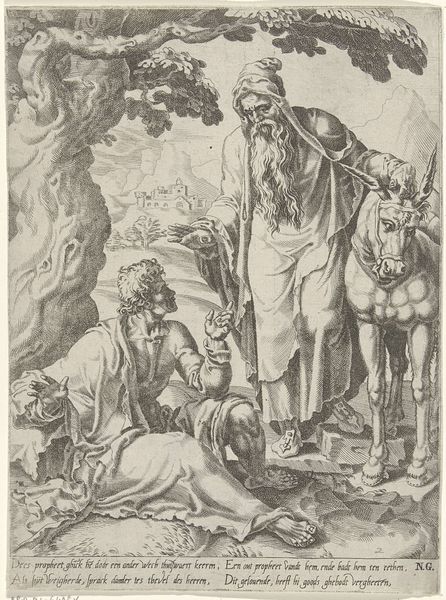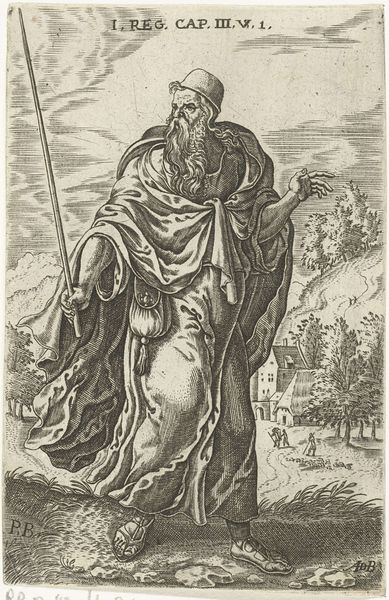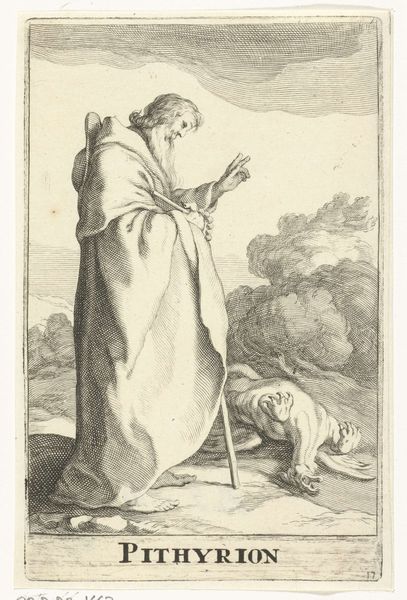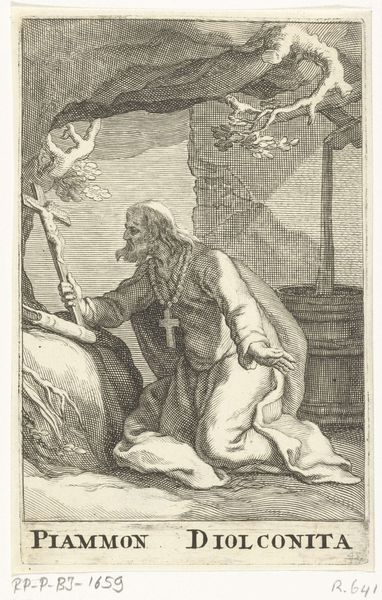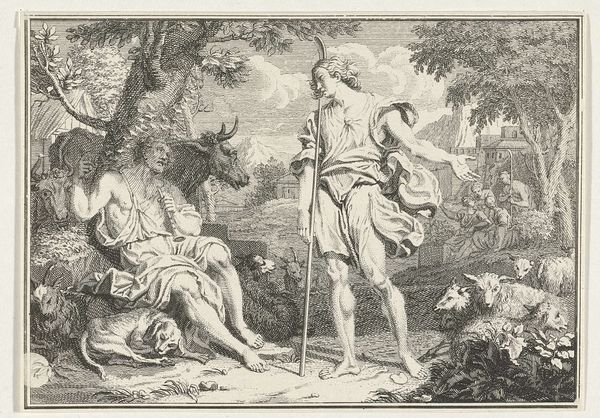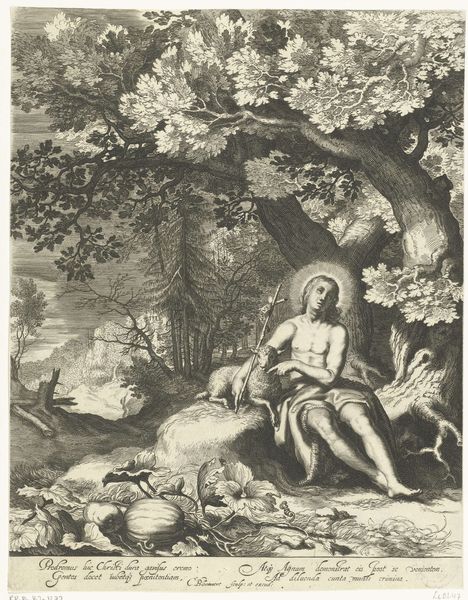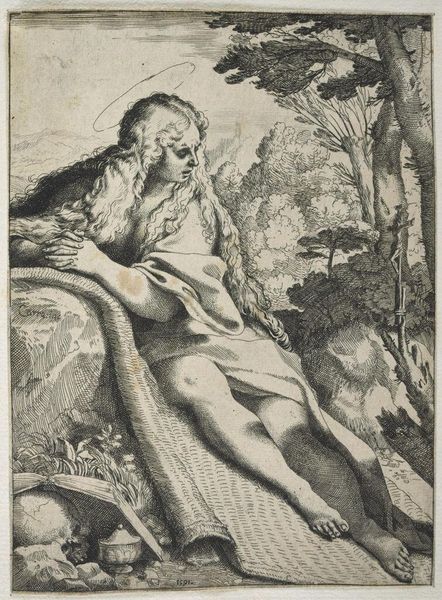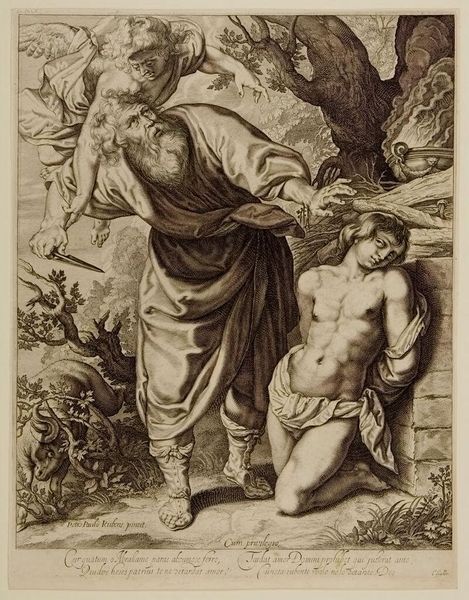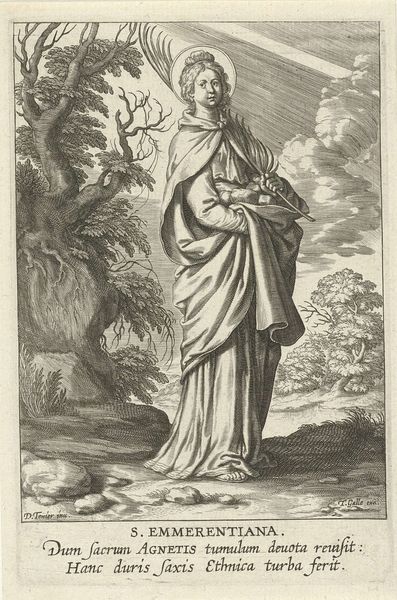
painting, oil-paint
#
portrait
#
baroque
#
painting
#
oil-paint
#
landscape
#
figuration
#
oil painting
#
flemish
#
mythology
#
history-painting
Copyright: Public domain
Curator: Look at how the figure is presented, so burdened and despairing! This oil on panel work from 1603 is entitled “King Manasseh in Exile” and was painted by Maarten de Vos. Editor: My immediate sense is one of displacement and loneliness. The scale is deceptively intimate, but the somber tones contribute to a much larger, almost overwhelming feeling of desolation. Curator: Notice the painterly effects in the foliage and clothing—De Vos builds a richly textured surface to enhance the narrative drama of Manasseh’s exile, that moment when he is forced to confront the error of his ways. The detail given to the adornments, such as the gilded chair he's sitting upon, seems very intentional given his fall from power. Editor: The chains, rendered quite starkly across his wrists, tell a strong tale of oppression—this royal figure made vulnerable is positioned almost as a critique of power itself, or perhaps an argument for penance offering liberation, an idea prevalent in reformist circles of that era. Consider too the broader context: The Southern Netherlands, experiencing its own sort of occupation under Spanish rule. Curator: Quite right. The dynamism and intensity certainly fall within the established Baroque style, while adhering to the Flemish tradition evident in the subject matter. Semiotically, you can’t overlook how that heavy crown still clings to his head; an insistent marker that underscores his royal position despite this moment of subjugation and banishment. Editor: But is it simply the acknowledgment of royalty? Doesn’t it serve to remind us of the performative aspects of leadership and its ultimate failure to shield him from systemic vulnerabilities? It forces one to meditate upon the spectacle of power but also invites parallels with marginalized communities of the day: perhaps reflecting upon forms of resistance during a time marked with strict societal hierarchies. Curator: Regardless of such interpretations, the craftsmanship and handling are impeccable. It speaks to the timeless ability of art to elicit strong emotion. Editor: I agree completely; the piece reverberates long past the aesthetic experience—a powerful testament.
Comments
No comments
Be the first to comment and join the conversation on the ultimate creative platform.
